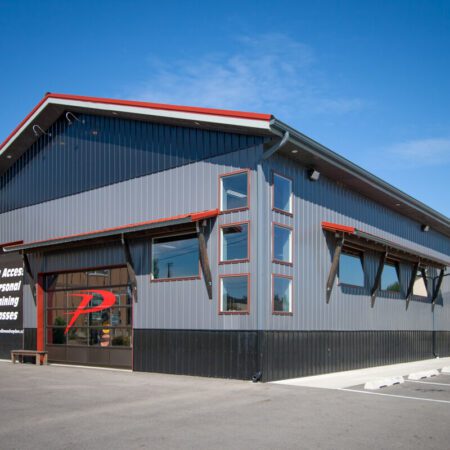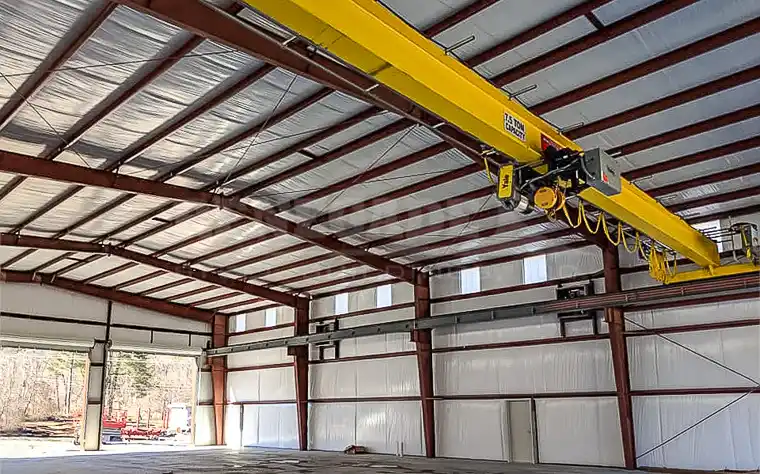Eco-Friendly Steel Buildings: Sustainable and Energy-Efficient Construction Solutions
The Competitive Advantage of Steel Buildings: Why Pick This Superior Alternative
Steel buildings have arised as an engaging option in the realm of building and construction for a multitude of factors. The competitive edge that steel structures hold expands much past their preliminary appeal, making them a favored choice for those seeking longevity and versatility in their building tasks.
Longevity and Durability
In the world of longevity, building and construction and resilience are fundamental elements that emphasize the value proposition of steel buildings. Steel is renowned for its effectiveness and ability to hold up against various environmental problems, making it a suitable option for durable structures. Unlike conventional products like timber or concrete, steel does not warp, crack, or rot in time, making certain that a steel structure remains structurally sound for decades.
One crucial variable contributing to the sturdiness of steel structures is their resistance to parasites such as termites, which can cause significant damage to wooden structures. Steel is likewise non-combustible, minimizing the threat of fire damages and raising the safety of inhabitants. Furthermore, steel buildings need very little maintenance compared to other building materials, saving both time and money over time.
Furthermore, improvements in steel production innovation have even more improved the durability of steel buildings by improving corrosion resistance and architectural honesty. With correct treatment and maintenance, a well-constructed steel building can last well over 50 years, providing a reputable and long lasting option for different building needs.
Cost-Effectiveness
With its numerous financial advantages, steel as a structure product uses a compelling cost-effective option for different construction jobs. The cost-effectiveness of steel buildings originates from a number of key aspects. Firstly, the first cost of steel might be greater than some traditional materials, yet the long-lasting financial savings are considerable. Steel frameworks need marginal maintenance, lowering repair and replacement expenses in time. Furthermore, steel is very resilient, which converts to lower insurance premiums as a result of decreased danger of damages from elements such as fire, bugs, and all-natural disasters.
Additionally, the building and construction process with steel is quicker and a lot more reliable compared to other materials, causing lowered labor prices and earlier project completion. Steel structures are additionally energy-efficient, permitting for savings on heating & cooling costs. The convenience of steel permits easy growth or alteration, reducing future building prices by eliminating the requirement for comprehensive improvements. In general, the cost-effectiveness of steel buildings makes them a clever financial investment for numerous construction requirements.
Adaptability in Design
The adaptability of steel as a building material permits for a broad array of ingenious layout possibilities in construction jobs. Steel buildings supply unmatched adaptability in design, making them a preferred option for builders and designers.
Steel's flexibility investigate this site likewise permits for personalization to fulfill particular layout requirements. Whether it's rounded roof coverings, complex reference exteriors, or distinct geometric forms, steel can be molded to bring practically any kind of design idea to life. In addition, steel buildings can be quickly increased or changed, providing future adaptability for adapting to altering demands.
Its resilience and resistance to corrosion guarantee that steel buildings maintain their visual allure and architectural honesty for years to come. Inevitably, the convenience of steel in layout not just improves the visual appeal of buildings but also contributes to their longevity and capability.

Lasting Building Practices
Structure upon the foundation of flexibility in layout, lasting construction techniques in steel buildings play a critical role in mitigating environmental influence and promoting long-term eco-friendly solutions. When steel buildings reach the end of their lifecycle, the steel parts can be recycled and made use of in brand-new construction tasks, decreasing the demand for raw materials and lessening waste. Furthermore, the energy effectiveness of steel buildings contributes to sustainability efforts.

Fast Building And Construction Timeline

In addition, the structured process of setting up steel structures reduces building and construction time dramatically. The simpleness of steel structure style and the ease of assembly add to faster job completion, making it an optimal choice for customers with time-sensitive needs (steel buildings). Furthermore, the capability to work on various elements concurrently, such as site preparation and structure building alongside steel fabrication, more speeds up the overall building and construction timeline
Final Thought
To conclude, steel buildings provide a competitive benefit because of their sturdiness, cost-effectiveness, flexibility in design, lasting building practices, and quick building timeline. These variables make steel buildings a superior choice for various building projects, supplying long-term advantages and value. Selecting steel structures can result in boosted performance, effectiveness, and sustainability in the construction market.
Unlike traditional materials like timber or concrete, steel does not warp, crack, or rot over time, making sure that a steel structure remains structurally audio for years.
The adaptability of steel as a structure product allows for a large array of innovative style opportunities in building and construction jobs.Building upon the structure of adaptability in design, sustainable building practices in steel structures play an essential function in mitigating ecological influence and promoting long-term green solutions. When steel buildings reach the end of their lifecycle, the steel elements can be reused and made use of in brand-new building and construction projects, decreasing the demand for raw products and lessening waste.In verdict, steel structures supply a competitive advantage due to their resilience, cost-effectiveness, adaptability in style, lasting building and construction techniques, and quick building and construction timeline.